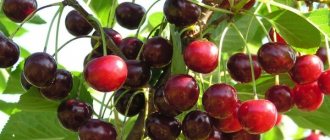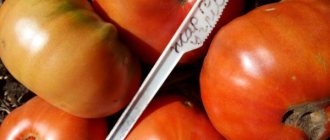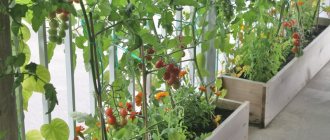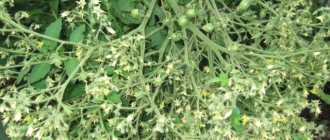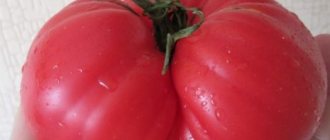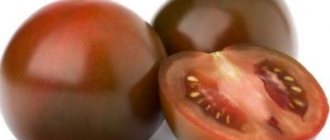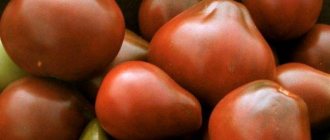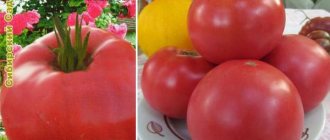Common cherry 'Lebedyanskaya'
Latin name: prunus cerasus 'lebedyanskaya'
Main species: Common cherry
| Fruit size |
|
| Fruit shape |
|
| Fruit color | |
| Winter hardiness |
|
| Decoration of plants and fruits |
|
| Flower size |
|
| Brush characteristics |
|
| Berry/truss separation |
|
| Nut kernel size |
|
| Blush (cover color) |
|
| Fruit pulp color | |
| Density and character of the pulp (fruit/bush/yag) |
|
| Fruit aroma |
|
| Frost resistance (fruit/bush/yag) |
|
| Drought resistance (fruit/bush/yag) |
|
| Beginning of fruiting after planting |
|
| Ripening period (fruit/bush/yar) |
|
| Consumer maturity |
|
| Productivity (fruit/bush/yag) |
|
| Fruit shedding |
|
| Remontant |
|
| Self-pollinating/self-fertile |
|
| Purpose of fruits (fruit/bush/yag) |
|
| Taste of fruits (fruit/bush/yag) |
|
| Soil pH requirements (fruit/bush/yag) |
|
| Shelter for the winter (fruit/bush/yag) |
|
| Soil type (fruit/bush/yar) |
|
| Disease resistance (fruit/bush/yag) |
|
| Resistance to pests (fruit/bush/yag) |
|
| Habitus (fruit/bush/yag) |
|
| Growth form |
|
| Crown density |
|
| Thorns, thorns |
|
| Vitamin content (fruit/bush/yag) |
|
| Keeping quality of fruits (fruit/bush/yag) |
|
| Cultivation region by origin (fruit/bush/yar) |
|
Expand all properties
Description of the plant:
Common cherry 'Lebedyanskaya' is a seedling from free pollination of the 'Vladimirskaya' variety, treated with the chemical mutagen EI (0.1%) at the seedling stage. Obtained from the All-Russian Research Institute of Horticulture named after. I.V. Michurin in 1976. Accepted for state variety testing in 1990.
Recommended for testing in the Central Black Earth region.
Dimensions and growth form:
Common cherry 'Lebedyanskaya' is represented by medium-sized trees. The crown is pyramidal, raised, of medium density.
Flowers and fruits:
The fruits are below medium to medium size, 3.4 g, oval-heart-shaped. The skin is dark red, of medium thickness. The stalk is easily separated from the branch.
The pulp is red, juicy, tender, relatively dense. The taste is very good, sweet and sour.
Precocity, ripening time, yield:
The variety is not early fruiting, table, self-sterile. Medium ripening period. Productivity is average, annual.
Winter hardiness:
Disease resistance:
The variety Common Cherry 'Lebedyanskaya' is moderately resistant to diseases and pests.
Cherry-cherry hybrids
Varieties obtained by crossing cherries and sweet cherries are usually called dukes. About 30 species of such hybrids grow in Russia. Several varieties will be described below.
Kharitonovskaya
Cherry with a medium ripening period. The height of the tree is 2.5 - 3 m. The branches form a spherical shape.
The cherries are dark red in color, juicy, weighing about 5 g. Sweet and sour. The stone can be easily separated from the pulp.
But she's quite big. They have good transportability. Fruiting occurs in the 4th year of planting.
It is capable of pollinating on its own, but for good fruiting the following varieties should be planted next to it:
- Vladimirskaya
- Lyubskaya
- Zhukovskaya
- it is rarely affected by fungal diseases.
- not suitable for cultivation in areas with severe frosts.
Podbelskaya
Tall tree - up to 5 m. The collection of branches forms a round shape.
Cherries are dark red in color, weighing up to 5 g. Fibrous. The taste is sweet and sour.
Fruiting begins 4–5 years after planting, in mid-summer. The fruits ripen gradually. The seed comes away from the pulp without difficulty. Can be used in any form.
This variety is not able to withstand strong drops in air temperature.
The plant's pollen is sterile. It is recommended to plant cherries next to it, or such varieties of cherries as:
- English early
- Lotovaya
- Anadolskaya
- May Duke
- Griot Ostheim
The combination of branches and leaves forms a pyramidal shape. The flowers are large and white. The fruits are dark red in color, weighing up to 10 g.
They taste sweet, similar to cherries. But the aroma is reminiscent of cherries. Full fruiting begins in the 4th year of planting. Productivity – 10 – 15 kg per tree.
The miracle bears fruit every year. The first harvest can be harvested at the end of June. This is a cross-pollinated cherry variety.
To get a harvest, you need to plant cherries next to it.
The branches of a tree have the property of stretching upward. To properly form the crown, some gardeners tie weights to the branches. The variety is better suited for warm regions of the country.
It is not worth planting in central Russia. The landing site must be chosen as windless, bright, and without close groundwater.
The plant must be pruned within 5 years. In the first year of life, during spring pruning, 1/6 of the shoots are cut off.
- The variety is resistant to fungal diseases.
- Cherry Miracle cannot become a pollinator - its pollen is sterile.
Baby
Plant height is 2 – 2.5 m. It grows very quickly. Not able to pollinate on its own.
Flowering begins in May. Early - bears fruit in June, 3 - 4 years after planting. 1 cherry weighs about 5 g. The color is dark red.
Up to 15 kg of crop is harvested from one plant. Pleasant to the taste, slightly sour. They are mainly used fresh, but they are also suitable for preparation.
Transportable. They are stored for no more than 10 days.
- high yield
- disease resistance
- endurance to strong drops in air temperature
- pleasant taste of fruits
- Susceptible to certain diseases
The best neighbors for her:
- Youth
- Nord Star
- Lyubskaya
- Turgenevka
Shpanka
The variety was bred by Ukrainian breeders. Trees with early fruit ripening.
It is popular not only in its own country, but also abroad. These are tall plants up to 6 m. Fruiting begins at the age of 5–6 years, in June or early July.
The harvest is harvested gradually. An adult plant produces up to 0.5 centners of fruit. The cherry is dark brown in color, weighing 4–5 g.
Cherry "Lebedyanskaya": characteristics and description
Cherry Lebedyanskaya has been known since 1990; scientists from the Institute of Horticulture I.V. Michurina worked on its creation. The main goal was to obtain an ideal variety for the Black Earth zone. The variety has a lot of positive qualities, but its main highlights are its productivity, large fruit and excellent taste.
Lebedyanskaya was obtained from the seed of the Vladimirskaya cherry, at a certain stage of growth it was treated with the EC mutagen, let's find out what came out of it.
Description and characteristics
The variety takes root well in the south, as well as in central Belarus, Russia and Ukraine. Lebedyanskaya cherry is most widespread in the Lipetsk, Tambov, Belgorod, Voronezh, Kursk and Oryol regions, as well as in Voronezh, Rostov-on-Don, Pavlovsk and Michurinsk. The variety blooms in the second half of May, and harvesting takes place in mid-July.
The first cherries can be picked in the 4th or 5th year of cultivation, there is no frequency. Ripening is friendly, harvesting is not delayed. Lebedyanskaya cherry is self-fertile, but when planting several varieties of pollinators, the yield increases noticeably; varieties such as Zhukovskaya, Vladimirskaya, Turgenevka and Morozovka are suitable for this purpose.
History of selection and region of breeding
The variety was bred at the All-Russian Research Institute of Horticulture named after I.V.
Michurin" (VNIIS). Reference. VNIIS is a technological organization engaged in the study of scientific areas of horticulture.
Dessertnaya Morozova, Morozovka and Ural Rubinovaya were also born at this institute.
Main focus: variety study of fruit trees and selection of new plant forms, disease resistance and ecology, cultivation and propagation of cuttings for planting, mechanization, technological methods for cultivating mature trees, proper storage of fruits.
The institute uses modeling and production of environmentally friendly products. When studying varieties, processes are automated. The organization implements innovative projects in various directions.
The university's developments have gained wide popularity among professionals and amateur gardeners.
Latin name: Cerasus. Author of the variety: T.V. Morozova.
The tree was obtained in 1990 from cherry pits of the Vladimirskaya variety. At the growth stage, the seed was treated with a solution of the mutagen EC.
It takes root well in the central and southern parts of Russia, Ukraine and Belarus.
Bred specifically for the Black Earth region. Distributed in Michurinsk, Voronezh, Rostov-on-Don, Pavlovsk.
Description of the tree and fruits
The tree develops quickly, growing up to 3, sometimes up to 3.5 meters in height. The crown is pyramidal, spreading, very dense, compacted. The variety bears fruit on bouquet branches. The leaves are large, oval, glossy, serrated along the edges.
Cherries up to 4.5 grams, dark red (almost black), heart-shaped due to the depression at the rounded base and slightly pointed top. The skin is dense with a uniform color without inclusions. The bone is small and free. The pulp is burgundy, medium density, very juicy, delicate consistency. The taste is predominantly sweet, little acid.
Yield and use
Lebedyanskaya cherry is suitable for cultivation in industrial and private gardens, as well as for sale. The fruits are good for fresh consumption and various types of processing. The variety is transportable and lightweight. The harvested crop is stored in the refrigerator for up to 15–20 days in a closed container.
On average, up to 7 kilograms of berries are collected from one tree; when planting pollinators, 2 or 3 kilograms more. On an industrial scale, productivity indicators are also very good - from 60 to 80 centners per hectare of land. The variety is suitable for mechanical harvesting.
Resistance to negative factors
Lebedyanskaya cherries can be grown in almost all regions of Russia, except the coldest. The variety is resistant to drought, hot climates, and tolerates severe frosts well, but only if there is good snow cover. In the northern regions, partial freezing of fruit buds due to return frosts is observed.
Lebedyanskaya has good immunity to various pests, fungi and viruses, however, experience in growing the variety has revealed some vulnerabilities. Resistance to coccomycosis is average, but there were no cases of hole spot, moniliosis and anthracnose.
Appearance of Lebedyanskaya cherry
Let us consider separately the appearance of the tree and the fruit.
Tree
The cherry tree is considered fast-growing because it reaches a meter mark in a year. He is tall - up to 3.0-3.5 meters. Comparable in growth to this variety are the Volzhskaya Krasnitsa plum and Gera and Victoria pears.
Requires professional crown pruning. The crown of the plant is in the form of a pyramid. The foliage is dense.
The bark on the main branches and short trunks has a chestnut tint. The shoots are dark brown in color, large in size, with a small number of lentils.
The buds are large, round-ovoid in shape, slightly deviated from the branches. The foliage is large, oval-rounded with a dark emerald hue. It has a shining double-crest serration and a flat, smooth topography. There is no pubescence.
petioles have an anthocyanin tint. The weight and elongation of the petioles are medium in size. At the end of the leaf plate there are 1-2 small glands. The color of the glands is burgundy.
The leaf blades are elongated in shape with a weak dissection. They fall late. Fruit bearing occurs on bouquet productive stems.
Fetus
The fruits of the variety are medium in size, weighing from 3.0 to 4.5 grams . Rossoshanskaya, Ashinskaya Steppe and Molodezhnaya can boast the same size of berries. The top of the fruit is rounded with a small depression at the cherry stalk. And the bottom is pointed. Thanks to this, they resemble the shape of hearts.
They have a small ventral seam. The peduncle is elongated with slight separation of the fruits from the branches. The fruits are dark burgundy in color without integumentary dots.
When fully ripe, they are almost black. The seed inside the berry is medium-sized.
It is round in shape and does not cause cuts in the mouth. Well separated from the core. The pulp of the cherries is a dark burgundy shade.
Very tender, dense, with abundant juice production. The juice of the berries is dark red-burgundy. The taste is sweet, with a slight sourness. Excellent juice is also obtained from the Zhukovskaya, Lyubskaya and Malinovka varieties.
Cherry Lebedyanskaya - description of its chemical composition:
| Compound | Quantity |
| Sugar | from 11.0% to 11.64% |
| Acids | from 1.0% to 1.37% |
| Ascorbic acid | from 34.0 to 34.66 mg per 100 g |
Advantages and disadvantages
Lebedyanskaya Cherry is a production and dessert variety that is popular due to its positive qualities:
- precociousness;
- productivity;
- excellent taste and appearance of the berries;
- transportability, long shelf life of fruits;
- versatility in use;
- self-fertility;
- endurance;
- disease resistance.
There are no disadvantages, all that can be highlighted is the need for proper pruning, as well as preventive treatments against coccomycosis.
Diseases and pests
It has good resistance to various fungal diseases .
Podbelskaya, Pamyati Enikeeva, Kharitonovskaya and Feya are highly resistant to coccomycosis.
To treat coccomycosis, the biofungicide drug “Fitosporin” is used. All infected leaves must be burned. If this is not done, the bacteria that cause this disease will overwinter and the plant will get sick again next year.
Conclusion. The variety has good productivity. From 60 to 80 centners of fruits are harvested from one hectare of land. Suitable for automated harvesting.
Has excellent quality berries. The fruits are burgundy in color and resemble the shape of hearts. The seed inside the berry is medium-sized. Due to its high sugar content, the variety is valued as a production and dessert variety.
Has a universal direction. Reproduction occurs through budding. It has good resistance to various fungal diseases. Resistance to coccomycosis is average. Bred specifically for the Black Earth region.
If you find an error, please select a piece of text and press Ctrl+Enter.
Features of cultivation
The area for planting Lebedyanskaya cherries should be light; even a light shade will negatively affect the taste of the fruit. The crop does not like stagnant water in the soil; the soil is preferably loamy, loose and permeable. When preparing planting holes, the soil is enriched with fertilizers, which should be enough for the first 3 or 4 years of cultivation. Planting is carried out in early spring or in the first half of autumn.
The first pruning is carried out immediately after planting, the tree is shortened to 50 or 70 cm. An adult tree must be formed annually, in the spring, before the buds open. Weak, diseased, frozen branches should be removed; at best, no more than 6 developed, strong branches should remain; if the crown is very dense, the fruits will be smaller.
Frequent watering and shelter are needed only before the first fruiting; fertilizing begins after it. Fertilizers are applied before and during flowering, as well as during the filling period of cherries and after harvesting. Before wintering, the foliage is removed and the tree is watered abundantly.
Planting and care
- Landing location
Tree pruning is done in the same way with ordinary Turgenevka and Zhukovskaya cherries. Pruning is done before buds appear. It is necessary to leave 5 or 6 developed branches.
The distance between them should be at least 10 centimeters. The rest are removed without leaving a stump. The wounds of the tree are immediately covered with garden varnish.
For planting cuttings, places with excellent sunlight should be selected. Planting is done on the south side of the buildings. It is best to plant along fences, where the mildest microclimate is present.
The selected area should be capable of accumulating large amounts of snow in winter. Snow protects the plant and does not allow it to freeze in winter. Loves loamy soil . Preparing for landing
Responds well to bait and vitamin-rich soil. It is better to choose soil with excellent breathability.
The landing site should not be near bodies of water . It is necessary to drain the soil.
When purchasing a ready-made seedling, its root system must be wrapped in moss or peat and carefully wrapped in plastic shipping film.
Seedlings must be grafted and have a developed root system. The above-ground part of the cutting needs to be cut to 55-70 centimeters , which allows you to properly form the plant in your garden plot. Reproduction by budding
Reproduction occurs through budding. It performs well on the rootstocks of fruit tree clones of the Vladimirsky variety and on various seedlings of garden varieties.
Budding is carried out in the second decade of July. Time: 14-21 days. 6-8 days before grafting, the tree bark is watered with warm or room temperature water. This procedure stimulates sap flow. The bark should separate well.
Before budding, all shoots and leaves in the grafting area must be removed. The petiole is chosen to be long, reaching 6-8 millimeters. All productive buds on such growths are vegetative. Graft
A cut of the tree bark, 3 centimeters long, is made on the rootstock, and a small transverse incision is made in the middle.
In this procedure, the top falls off and a scion is inserted into the lower part.
Its width should match the cut made. The grafting site is tied with plastic wrap. The kidney is left open. After 14-21 days, it is necessary to check the survival rate of the eyes.
When pressed lightly, the leaf petiole should separate. This means that the kidney has successfully implanted. After 30 days, the bandage is removed. In winter, the budding site is protected from frost. In early spring, established scutes should have a smooth surface with an even bud.
Prevention and treatment of coccomycosis
To prevent the disease, the tree is sprayed with a solution of copper oxychloride - 30 grams of the drug per 10 liters of water. The first treatment is carried out immediately after flowering, the next after 2 or 3 weeks, the last after collecting all the berries. For treatment, special medications are used, strictly following the instructions. Fitosporin gives good results.
Lebedyanskaya cherry appeared quite a long time ago; gardeners had enough time to carefully study it. For the most part, the reviews are positive; only summer residents from the cold regions of our country talk about growing problems. The variety is worthy of attention, be sure to take a closer look at it.
Reviews
Semyon. I live in the Leningrad region, when I bought a Lebedyanskaya cherry seedling, I was afraid that it would not withstand our winters and would often get sick. The variety turned out to be incredibly stable and strong, there were no diseases or pests. In the spring, as soon as it gets warmer, I spray all the trees in the garden with Bordeaux mixture; perhaps this easy preventive measure protects the cherries as much as possible. The fruits are beautiful, tasty, we eat them fresh, freeze them, and prepare concentrated juices for the winter.
Galina. It is rare to find a variety of cherries that does not get sick, is not affected by pests, withstands all weather adversities and consistently produces good harvests of delicious berries. Lebedyanskaya meets all of the above requirements. I have been growing this variety for more than 10 years, and this spring I planted 2 more trees. You can make anything from the fruits; when preparing compotes and jams, you use less sugar than many other varieties, and words cannot describe how delicious the dumplings with these cherries are!
